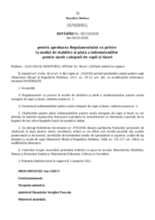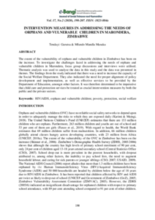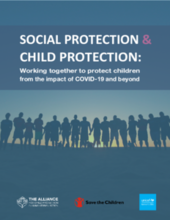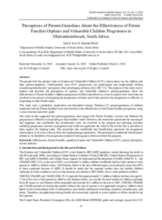Displaying 71 - 80 of 461
Medidas preventivas e de mitigação do impacto do COVID-19 nos grupos vulneráveis e de alto risco entre os beneficiários do PSSB.
This paper disentangles the effects of behavioral change promotion from cash transfers to poor households through an experiment embedded in a government program in Niger.
This report from Save the Children calls upon governments, donors and other development partners to urgently support an expansion in social protection coverage of children and their caregivers (predominantly women).
În temeiul art. 4 alin. (6) și art. 6 din Legea nr. 315/2016 privind prestațiile sociale pentru copii (Monitorul Oficial al Republicii Moldova, 2017, nr. 19-23, art. 56), cu modificările ulterioare, Guvernul HOTĂRĂŞTE:
1. Se aprobă:
To investigate the challenges faced in addressing the needs of orphans and vulnerable children in Marondera, focus group discussions and interviews were utilised. Thematic analysis was used to analyse the data in this study and the data was presented in themes.
This paper presents evidence of how social protection approaches can contribute to child protection outcomes and outlines recommendations which call for strong mobilization and uptake by governments, UN and multilateral development agencies, regional bodies, donors, and Civil Society Organizations (CSOs).
The purpose of this study was to explore and describe the perceptions of orphans and vulnerable children’s parents/guardians about the effectiveness of Future Families’ children programme in Olievenhoutbosch as a way to explore how much they are involved in the process of designing the programme activities and if they perceive the programme as effective in responding to their family needs.
The purpose of this study was to investigate the extent to which government allocated financial resources, management procedures and stakeholders are major determinants of implementation of cash transfer program for orphans and vulnerable children in Isiolo County, Kenya.
This study employed a mixed-methods approach to examine process findings from a randomized control trial from the first county-level Pay for Success initiative, Partnering for Family Success.
This experimental evaluation of the LEGACY program - a program implemented in three townships across Myanmar’s central dry zone that provided monthly cash transfer to mothers in their last two trimesters of pregnancy until the child turns two years old, as well as a monthly Social and Behavioral Change Communication (SBCC) activity supplementing the cash transfers, covering a range of topics related to nutrition and child health - measures the program's impact on child nutrition.










